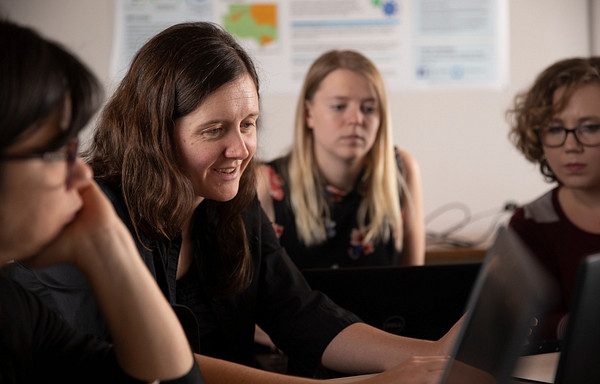
When the COVID-19 pandemic began in January 2020, many health providers of people who use drugs shifted patient visits online as the U.S. adjusted its medical policies to accommodate a virtual environment.
From August 2020 to September 2021, researchers from Northern Arizona University studied how COVID-19 telehealth policies impacted people who use drugs. They published their results in Frontiers in Sociology in an article titled “Possibilities and Constraints of Rapid Online Ethnography: Lessons From a Rapid Assessment of COVID-19 Policy for People Who Use Drugs.”
In response to COVID-19 restrictions on travel, the researchers conducted their Rapid Assessment, Response and Evaluation (RARE) strictly online, which included focus groups and interviews with 45 healthcare providers and community stakeholders and 19 clients from rural and urban areas throughout Arizona. They also attended 26 webinars, online trainings and virtual conferences that focused on opioid policy and medication for opioid use disorders.
Project researchers included Emery Eaves, associate professor, NAU Department of Anthropology; Regents’ professor emeritus Robert T. Trotter II, Department of Anthropology; Bonnie Marquez, project coordinator; Kayla Negron, intern; Eck Doerry, professor, School of Informatics, Computing, and Cyber Systems; David Mensah, research assistant and interdisciplinary health doctoral student; Kate A. Compton-Gore, research associate and interdisciplinary health doctoral student; Shana A. Lanzetta, research associate and interdisciplinary health doctoral student; Kathryn Kruithoff, community research partner; Kaitlyn Dykman, intern; and Regents’ professor Julie A. Baldwin, Department of Health Sciences and director, Center for Community Health and Engaged Research.
Advantages and disadvantages of online treatment
In response to the COVID-19 pandemic, the United States Drug Enforcement Administration declared a public health state of emergency on January 31, 2020, and temporarily relaxed restrictions for medication-assisted treatment. Shortly after, telemedicine prescribing was allowed for people in substance use disorders treatment as of March 31, 2020.
Changes for patients in substance use disorder treatment included allowing longer take-home doses of methadone and buprenorphine, reducing barriers for prescriber authorization and increasing allowances for telehealth delivery.
Some behavioral health providers were initially enthusiastic about telehealth as it reduces the risk of COVID transmission, lessened the burden on clients in general and addressed the stigma associated with medication for opioid use disorders. They were also able to see more patients in rural areas or who had difficulty with transportation, and they were able to continue seeing patients who had moved away.Eaves said that other providers had varied opinions on the benefits of telehealth.
“Some providers were very strongly in favor of telemedicine and others were concerned that they would lose the ability to protect or oversee their clients,” Eaves said. “Providers in rural areas were often strongly in favor of telehealth as a way to connect with people.”
Other providers felt there was a lack of personal connection and that they were not able to read their clients’ nonverbal cues, such as observing their posture, body language and overall wellbeing in an online environment only. Drug screening was also difficult for providers to conduct when telehealth was the only method of treatment.
Patients had mixed responses to their telehealth experience. Some patients the researchers were able to survey said they were satisfied with their telemedicine treatment while others were frustrated with technology difficulties and lack of personal connection. If they had any technological difficulties, patients were unable to receive treatment.
Online ethnographic assessment during COVID-19
In conducting their RARE study online only, the researchers found that some elements of recruitment were effective and feasible, such as online conferences, webinars and trainings for healthcare providers and community stakeholders. The researchers found that the advantages of telehealth for researchers including being able to participate in conversations and gain national perspectives without traveling.
“What we were interested in learning was their [providers] interests, what concerns people were raising, what questions they were bringing up, and how they were discussing pros and cons of telemedicine,” Eaves said.
Unfortunately, the same technology that worked well for conference and provider-to-provider communication acted as a digital divide to online ethnographic research. They also had difficulty contacting providers by phone or email.
We successfully reached quite a few providers, but it was challenging to reach a range of patients,” Eaves said. “Patients are protected by privacy policies, which made it difficult for providers to invite them, and for people who use drugs who were not currently in treatment it was really difficult to understand their perspectives when we were restricted to being online.”
U.S. Health Insurance Portability and Accountability Act (HIPAA) privacy protects patients against information sharing, email policies and telemedicine appointments.
The researchers suggest that post-pandemic, more research should consider how providers and patients may benefit from a hybrid treatment model to include people in group support systems and allow better access and more continuity in care.
This work was supported by the National Institutes of Health, National Institute for Minority Health and Health Disparities as a supplement to the Southwest Health Equity Research Collaborative NIH/NIMHD RCMI U54MD012388-04S4 (JB-PI).